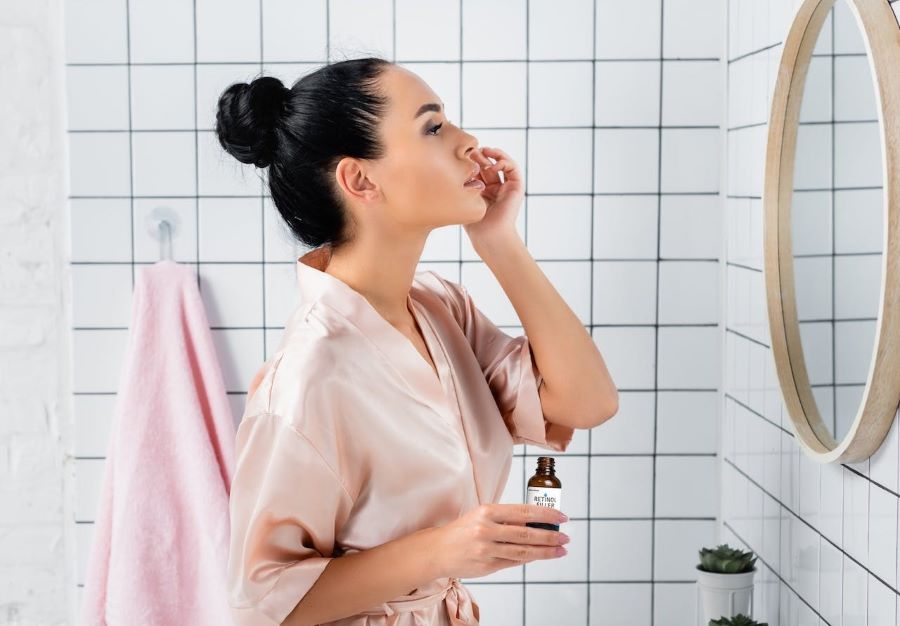In the ever-evolving realm of skincare, the quest for flawless skin often leads beauty aficionados down a rabbit hole of questions, especially when it comes to mixing potent ingredients. One prevalent dilemma arises: Can you harmoniously blend BHA (beta hydroxy acid) with retinol? The skincare community buzzes with differing opinions, leaving many consumers in a quandary. Let’s unpack this topic layer by layer, examining the science, benefits, risks, and expert insights to challenge your current skincare routine.
Understanding BHA and Retinol
Before diving into the complexities of mixing these two powerhouse ingredients, it’s crucial to understand their individual properties. BHA, a lipid-soluble exfoliant derived typically from salicylic acid, dives deep into the pores. It’s lauded for its ability to combat acne and clear away dead skin cells, promoting a smoother, more radiant complexion. On the flip side, retinol—a derivative of vitamin A—acts like a youth serum. It enhances cell turnover, minimizes fine lines, and evens skin tone, making it a beloved staple in anti-aging regimens.
As different as they are, the synergy potential between BHA and retinol is tantalizing. But, does it come with caveats? The answer is layered.
The Benefits of Combining BHA and Retinol
Imagine the power of both ingredients working simultaneously to combat those pesky skin concerns. When used together, they offer a multi-faceted approach to skincare. BHA clears impurities and sebum, while retinol promotes effective cell turnover. This dynamic duo can lead to visibly clearer, more refined skin.
Moreover, for those dealing with uneven skin texture or post-acne scars, the combination can expedite the healing process. BHA prepares the canvas by sloughing away dead skin, while retinol’s reparative properties plump and rejuvenate. The outcome? A firmer, smoother visage.
The Risks of Mixing BHA with Retinol
However, let’s not rush into the mix without caution. The dual potency of BHA and retinol may overwhelm the skin, especially for novices. The risk of irritation, redness, and peeling increases when these strong actives are layered or used in conjunction. Sensitivity levels vary; what’s a gentle caress for one may feel like a raging storm for another.
Moreover, both ingredients are known for their sun-sensitivity. Layering them heightens the chances of sunburn. Consequently, if you’re considering this combo, it’s imperative to incorporate a rigorous sun protection routine. SPF is non-negotiable when dabbling in potent actives.
Expert Recommendations: A Balanced Approach
So, what do the experts say? Dermatologists often recommend a cautious approach. If you’re eager to include both BHA and retinol in your regimen, consider alternating days. One method might involve using BHA in your evening routine on Monday, Wednesday, and Friday, while reserving retinol for Tuesday, Thursday, and Saturday. This structured separation allows your skin to reap the benefits of both without falling prey to excessive irritation.
Additionally, starting slowly is paramount. Introduce either product individually, spacing them out by a week or two. Gauge your skin’s reaction before layering them. A patch test could also be a wise move, as it provides insight into potential adverse reactions.
Integrating BHA and Retinol: Tips for Success
1. Hydration is Key: Ensure your skin is well-hydrated. Incorporate a nourishing serum or moisturizer between your active treatments to mitigate irritation. A calming ingredient such as hyaluronic acid could act as a buffer.
2. Listen to Your Skin: If you notice excess redness or irritation, take a step back. Your skin is unique and may require personalized adjustments. Always prioritize its health over aesthetic goals.
3. Time of Application: Consider the timing of your applications. For maximum efficacy, allow BHA to dry completely before applying retinol. This prevents any potential layering issues and ensures optimal absorption.
4. Monitoring Results: Track your skin’s response. Regularly assess whether your complexion is improving or flaring up. Adjust your routine accordingly.
Alternatives to Consider
If the idea of mixing seems too audacious or your skin is particularly reactive, consider alternatives. Products that combine gentler exfoliants or milder forms of retinol, like bakuchiol, may provide a more soothing approach. Additionally, chemical exfoliants with lactic acid offer a more hydrating option while still encouraging cellular turnover.
The Final Challenge
Can you master the art of mixing BHA and retinol? It’s undoubtedly a daring experiment that requires knowledge, vigilance, and an attentive ear to your skin’s needs. If you’re ready to embark on this journey, equip yourself with patience and dedication. The potential rewards are immense: clearer, rejuvenated skin awaits you if you navigate the process thoughtfully. Always remember—the world of skincare is as much about individual response as it is about ingredient efficacy. Choose wisely, and may your pursuit of beauty lead to radiant success.

